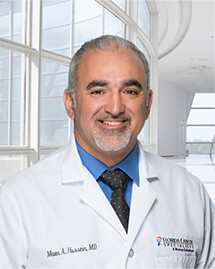Author(s): Sun Loo1,2,3; Andrew W. Roberts1,2,3; Natasha S. Anstee2,3; Glen A. Kennedy4; Simon He5; Anthony P. Schwarer6; Anoop K. Enjeti7,8; James D’Rozario9; Paula Marlton10; Ian A. Bilmon11; John Taper12; Gavin Cull13; Campbell Tiley14; Emma Verner15; Uwe Hahn16; Devendra K. Hiwase17; Harry J. Iland18,19; Nick Murphy20; Sundra Ramanathan21; John Reynolds22; Doen Ming Ong22; Ing Soo Tiong1,22; Meaghan Wall23; Michael Murray24; Tristan Rawling25; Joanna Leadbetter26; Leesa Rowley27; Maya Latimer9; Sam Yuen7; Stephen B. Ting6; Chun Yew Fong5; Kirk Morris4; Ashish Bajel1; John F. Seymour1; Mark J. Levis28; Andrew H. Wei1,2,3,22
Author Affiliations
1Department of Haematology, Peter MacCallum Cancer Centre and Royal Melbourne Hospital, Melbourne, VIC, Australasian; 2Walter and Eliza Hall Institute of Medical Research, Parkville, VIC, Australasian; 3University of Melbourne, Parkville, VIC, Australasian; 4Royal Brisbane and Women’s Hospital, Herston, QLD, Australasian; 5Department of Clinical Haematology, Austin Health, Heidelberg, VIC, Australasian; 6Department of Haematology, Box Hill Hospital, Box Hill, VIC, Australasian; 7Calvary Mater Newcastle Hospital, Waratah, NSW, Australasian; 8University of Newcastle, Callaghan, NSW, Australasian; 9Canberra Hospital, Garran, ACT, Australasian; 10Princess Alexandra Hospital and University of Queensland, Woolloongabba, QLD, Australasian; 11Department of Haematology, Westmead Hospital, Westmead, NSW, Australasian; 12Nepean Hospital Cancer Care Centre, Kingswood, NSW, Australasian; 13Sir Charles Gairdner Hospital, University of Western Australia, Crawley, WA, Australasian; 14Gosford Hospital, Gosford, NSW, Australasian; 15Concord Repatriation General Hospital, Concord, NSW, Australasian; 16Department of Haematology, The Queen Elizabeth Hospital, Adelaide, SA, Australasian; 17Department of Haematology, Royal Adelaide Hospital, Adelaide, SA, Australasian; 18Institute of Haematology, Royal Prince Alfred Hospital, Camperdown, NSW, Australasian; 19University of Sydney, Camperdown, NSW, Australasian; 20Royal Hobart Hospital, Hobart, TS, Australasian; 21St George Hospital, Kogarah, NSW, Australasian; 22Department of Haematology, The Alfred Hospital and Monash University, Melbourne, VIC, Australasian; 23Murdoch Children’s Research Institute, Melbourne, VIC, Australasian; 24Sydney Pharmacy School, Faculty of Medicine and Health, University of Sydney, Camperdown, NSW, Australasian; 25University of Technology Sydney, Sydney, NSW, Australasian; 26WriteSource Medical Pty Ltd, Lane Cove, NSW, Australasian; 27Australasian Leukaemia and Lymphoma Group, Richmond, VIC, Australasian; 28Sidney Kimmel Comprehensive Cancer Center, Johns Hopkins University, Baltimore, MDAustralasian
